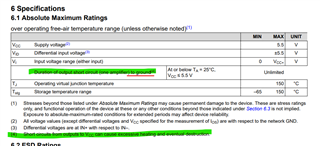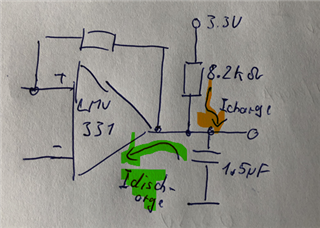Hello Everybody;
The Output of the LMV331 is connected to a capacitor (app 1.5µF @2V): If the LMV331 gets low, the capacitor will be discharged over the output pin of the LMV331. There is no additional resistor.
(The charging of the capacitor is done with a pull up).
In the datasheet there are values of the maximum sink current is between 10..84mA
. ![]()
Does this mean the sink current is limited by the LMV331 (which would be fine for me) or do I have to take care that the current does not exceed these values?
Thank you
Matthias



